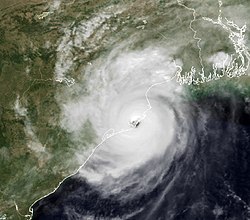
Super cyclonic storm is the highest category used by the India Meteorological Department (IMD) to classify tropical cyclones, within the North Indian Ocean tropical cyclone basin between the Malay Peninsula and the Arabian Peninsula. Within the basin, a super cyclonic storm is defined as a tropical cyclone that has 3-minute mean maximum sustained wind speeds of at least 120 knots (220 km/h; 140 mph). The category was formally introduced during the 1999 season alongside Very Severe Cyclonic Storms, in order to replace the previously used Severe Cyclonic Storm with Core of Hurricane Winds. There have been at least nine storms that have attained such an intensity. The most recent super cyclonic storm was Cyclone Amphan in 2020 North Indian Ocean cyclone season.